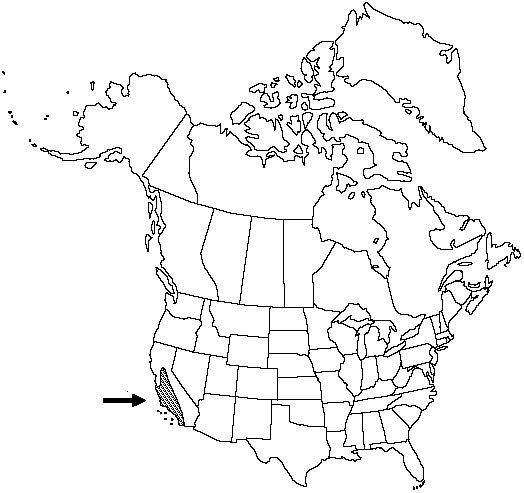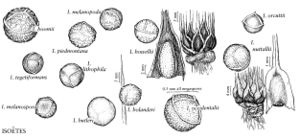Difference between revisions of "Isoëtes orcuttii"
Fern Bull. 8: 13. 1900.
FNA>Volume Importer |
FNA>Volume Importer |
||
| Line 51: | Line 51: | ||
|publication year=1900 | |publication year=1900 | ||
|special status= | |special status= | ||
| − | |source xml=https://jpend@bitbucket.org/aafc-mbb/fna-data-curation.git/src/ | + | |source xml=https://jpend@bitbucket.org/aafc-mbb/fna-data-curation.git/src/f6b125a955440c0872999024f038d74684f65921/coarse_grained_fna_xml/V2/V2_430.xml |
|genus=Isoëtes | |genus=Isoëtes | ||
|species=Isoëtes orcuttii | |species=Isoëtes orcuttii | ||
Revision as of 18:56, 24 September 2019
Plants becoming terrestrial. Rootstock nearly globose 2(–3)-lobed. Leaves deciduous, bright green, pale toward base, less than 8 cm, gradually tapering to tip, often surrounded at base by several black scales to ca. 5 mm, spirally arranged, pliant, gradually tapering to tip. Velum covering entire sporangium. Sporangium wall unpigmented. Megaspores white to gray, lustrous, 200–380 μm diam., ± smooth to obscurely tuberculate; girdle obscure. Microspores brown in mass, 20–30 μm, smooth to papillose. 2n = 22.
Phenology: Spores mature in spring.
Habitat: Vernal pools
Elevation: mostly 0–1500 m
Distribution

Calif., Mexico in Baja California.
Discussion
Isoëtes orcuttii, a vernal pool endemic, may be difficult to distinguish from I. nuttallii, which occurs in a wider range of habitats. Plants of I. orcuttii are generally smaller than those of I. nuttallii, which has longer, thicker, less flexible leaves and larger megaspores.
Selected References
None.
